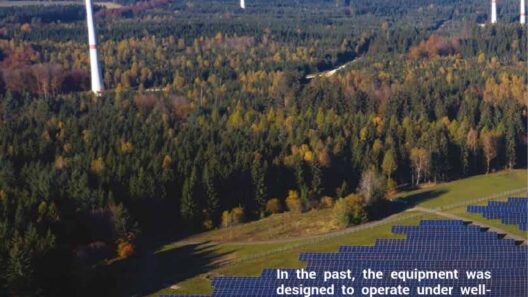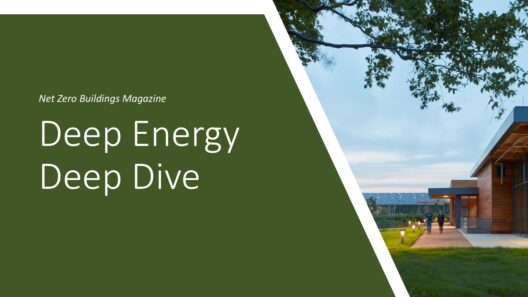In contemporary urban landscapes, the prevalence of heat islands exacerbates energy consumption and amplifies climate change. Green roofs have emerged as a multifaceted solution to mitigate these issues. By layering vegetation atop buildings, cities harness nature to improve energy efficiency, enhance biodiversity, and promote sustainable urban development. This discussion delves into the mechanisms by which green roofs conserve energy, highlighting their multifarious advantages and the different types of green roofing systems available.
To comprehend how green roofs conserve energy, it is essential to first appreciate their physical structure. Typically composed of a waterproof membrane, insulation layer, drainage layer, growing medium, and vegetation, these roofs serve as a natural barrier against temperature fluctuations. During warmer months, green roofs regulate indoor temperatures by providing a cooling effect through the process of evapotranspiration. This mechanism is where water evaporates from the soil and transpiration occurs from plants, releasing moisture into the atmosphere and significantly reducing surrounding temperatures. Consequently, buildings equipped with green roofs experience decreased reliance on air conditioning, leading to lower energy consumption and reduced utility costs.
Furthermore, the insulation properties of green roofs are instrumental in enhancing energy efficiency. The growing medium and vegetation layer act as an additional insulator, minimizing heat ingress and egress. During winter, this helps retain internal heat, thus limiting the need for heating systems. The result is a more stable indoor climate which not only reduces energy use but also increases comfort for occupants. This duality of energy conservation across seasons is a fundamental advantage of integrating green roofs into urban planning.
Different types of green roofs can yield varied benefits and energy savings. The two primary categories are extensive and intensive green roofs. Extensive green roofs feature a lightweight growing medium, typically ranging from 2 to 6 inches in depth, composed of drought-resistant plants. Mostly unoccupied and designed for minimal maintenance, these roofs are ideal for large-scale applications in urban environments. Their ability to insulate and cool is substantial, making them a cost-effective solution for energy conservation.
On the other hand, intensive green roofs are constructed with a deeper growing medium, facilitating the cultivation of more diverse and substantial plant species, including shrubs and even trees. These systems require more maintenance and can support human activity, potentially serving as green spaces for recreation or agriculture. Although they demand more resources to establish and maintain, intensive green roofs can provide enhanced aesthetic appeal, promote biodiversity, and yield significant energy conservation benefits, particularly in dense urban areas where green space is limited.
Beyond energy efficiency, green roofs contribute to the overall sustainability of urban development. They capture and retain rainwater, reducing stormwater runoff and minimizing the burden on municipal drainage systems. By mitigating flooding risks and improving water quality, green roofs enhance the resilience of cities against climate-related challenges. This not only aids in energy conservation but also underscores the intrinsic link between ecological health and urban infrastructure.
Sustainability is further bolstered by the selection of native plant species which require less irrigation and are inherently more resilient to local climatic conditions. Utilizing indigenous flora reduces maintenance costs and minimizes water usage, cementing the role of green roofs as a pragmatic solution in the face of creeping climate change.
The presence of green roofs actively contributes to biodiversity. By creating habitats for various species, including insects and birds, these systems foster a more robust ecosystem within urban settings. This biodiversity is critical; it provides essential ecological services such as pollination and pest control, further reducing the need for synthetic fertilizers and pesticides that contribute to energy consumption in their production and application.
Integrating green roofs into infrastructure also prompts the potential for social benefits. As urban populations swell, the demand for green spaces becomes increasingly pressing. Green roofs can serve as communal areas that promote mental well-being and community interaction, which is rooted in biophilic design principles. By enhancing human experiences in urban environments, green roofs meet both aesthetic and functional needs while contributing to energy efficiency.
In terms of quantifying the energy savings provided by green roofs, numerous studies have demonstrated their efficacy. An extensive green roof can reduce roof surface temperatures by up to 60 degrees Fahrenheit compared to traditional asphalt roofs. Consequently, this drastic reduction translates into significantly lowered cooling loads for buildings and less reliance on energy-intensive air conditioning systems. Additionally, the urban heat island effect—the phenomenon where urban areas become significantly warmer than their rural surroundings—can be mitigated, leading to cooler microclimates across cities.
While the initial capital investment for green roofs can be higher than conventional roofing systems, the lifecycle cost analysis often reveals substantial savings over time. By decreasing energy expenditures and improving the longevity of roofing materials through protection from UV radiation and temperature extremes, green roofs represent not just a sustainable choice but also a financially prudent one.
As cities grapple with the dual challenges of climate change and urbanization, integrating green roofs is an imperative strategy. This holistic approach champions energy efficiency while fostering ecological health, enhancing social spaces, and amplifying city resilience. As such, the multifarious benefits of green roofs showcase their role as indispensable assets in crafting sustainable urban environments, forging a path toward a cooler, greener, and more energy-efficient future.







